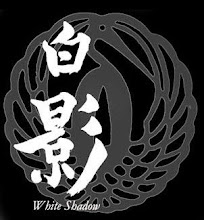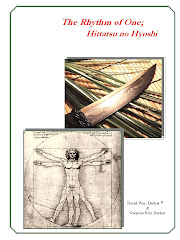2007 Disappointments and Surprises:
It is November of 2007 and our new book, When Two Tigers Fight, isn’t as close to being finished as I would like! As to be expected there have been several setbacks along the way. Some of these delays have already held-up the progress of the book for months. One disappointment was the mile-long laundry list of excuses from a knifemaker who str
 ung me along for way too many months. Each email offered a future delivery time only to be missed time after time. Actually this was not an isolated incident. I have come to the conclusion that two weeks from a knifemaker means two galactic weeks, which is about the equivalent of about 6 Earth months. Remember what I said that a man is only as good as his word? I meant the quality of his word not the quantity. Most of the knives have finally shipped, they are finely made knives, and all’s well that ends well, I suppose.
ung me along for way too many months. Each email offered a future delivery time only to be missed time after time. Actually this was not an isolated incident. I have come to the conclusion that two weeks from a knifemaker means two galactic weeks, which is about the equivalent of about 6 Earth months. Remember what I said that a man is only as good as his word? I meant the quality of his word not the quantity. Most of the knives have finally shipped, they are finely made knives, and all’s well that ends well, I suppose.Then there was the long lost Laredo Bowie. This time it was my turn to send copious emails. When it finally came, almost 6 months late, it was not the latest San Mai version as promised. It was not made in the USA or in Japan, but the cheaper version made in Taiwan. Admittedly the price was less than originally quoted, but I wanted the best example of the knife to review for our book, not the cheapest. I offered several times to pay an additional fee for the better knife, but what I got is what you’ll read about in the book.
Also a disappointment were the people to whom I sent free copes of my first book intended for their review and comment. Some of these folks never even acknowledged its arrival, not even an email. What did I expect from a guy who likes to be called Animal, and a few others, but hey Chris what happened, no reply or comment from you? By the way, I bought videos or books from all of these people. One of the worst disappointments was the Editor of Paladin Press saying The Rhythm of One was a good book but it didn’t really have anything new to offer. What it really boiled down to was that it said a lot of new things that might have conflicted with a named writer who seems to have a stranglehold on the genre’. If you cannot figure that one out, open a copy of their catalog and see whose name appears as an expert on just about everything knife related.
A personal disappointment was not attending the 2007 Riddle of Steel. Truly there is nothing else like it in the world! But, it would have been less than a total experience for me without having my best friend, training partner, and daughter along to share it with. One of the last "male bastions" and all that, geeze guys grow up. Women warriors should always be welcome anywhere. Google the names Morrigan, Scathac, Boadicea, or Tomoe Gozen and see what you find. But enough whining already. That’s the rules and I either acquiesce or stay home.
There were also some very pleasant surprises in 2007. Some of the best custom knives that I bought this year came secondhand at good prices from one Ebay seller. They were also by makers previously unknown to me. There were also some very nice reviews of The Rhythm of One and my Cobra by Michael Thau, Mark Davies, and others in the self-defense trade. Thanks guys! The photos of the Cobra finally made it into Tactical Knives magazine, my thanks to Steven Dick, Editor. This year I discovered the Usual Suspects Network (USN). What a cool place to check out new makers, new knives, and delve into some interesting topics. Its going to get expensive belonging to this forum I think. I did manage to sell a total of five Cobr
 a knives in 2007 and the buyers were all very pleased! That’s not exactly enough business to provide me with a comfortable retirement, but it was satisfying to know that the basic design is solid, functional, and saleable. Hopefully next year there will be more sales of the Cobra and our new "MIK" (Modern Indonesian Knife) from Zola Octanoviar. This should be a modern take on the venerable Rencong.
a knives in 2007 and the buyers were all very pleased! That’s not exactly enough business to provide me with a comfortable retirement, but it was satisfying to know that the basic design is solid, functional, and saleable. Hopefully next year there will be more sales of the Cobra and our new "MIK" (Modern Indonesian Knife) from Zola Octanoviar. This should be a modern take on the venerable Rencong.The very best thing to happen this year was the opportunity to finally meet Gary Bradburn in person! He is an old school gentleman, good friend, and maker of the nicest Shobu tanto this side of the Pacific, maybe this side of the Galaxy! Gary is a man who always goes the extra mile to make his customers happy. Although thousands of miles separate us I feel like I can count Zola Octanoviar among my very best friends too. Check out our articles on Zola and the Noesantaraa knives further down the blog. Zola is going to strike out on his own and we are going to help support his efforts. For next year I have to figure out how to meet Mark Davies, since we have shared emails, websites and such. Hey Mark, thanks for the Black Devil F/S. All in all it was a good year and I am going to ignore the disappointments and forge ahead with work on our book and spend more time with those folks whose company and correspondence I enjoy. I have also ha
 d the pleasure of correspnding with Tom Sotis of AMOK! and knifemakers James Coogler (dragon karambit)and Mark Terrell (the Hangnail)whose karambits are sweet knives! I wanted to add a thankyou here to Peter Parkinson and Brent Sandow for the terrific work they did making my chisel-tipped Fairbairns for testing. An article will be posted on the tests later. Great knives from two great people.
d the pleasure of correspnding with Tom Sotis of AMOK! and knifemakers James Coogler (dragon karambit)and Mark Terrell (the Hangnail)whose karambits are sweet knives! I wanted to add a thankyou here to Peter Parkinson and Brent Sandow for the terrific work they did making my chisel-tipped Fairbairns for testing. An article will be posted on the tests later. Great knives from two great people.When all is said and done, the bottom line is this: While the function of steel is to cut, it can also bind. If you’re a warrior you’ll know what I mean.
As a reminder, check out Mark Davies’ website here. http://www.tacticaledge.co.uk/instructional_articles.asp
and Gary’s website here.
http://www.bradburnknives.com/












 factors in buying this knife, called the "Civilian," was that James Keating actually produced a video for users of this unique knife. I intend to order a copy of the video at my first opportunity. The other factor was a comment I read that the knife proved to be "too lethal" for the use that it was originally intended for. I an abstruse way that recommends it to me for self-defense use.
factors in buying this knife, called the "Civilian," was that James Keating actually produced a video for users of this unique knife. I intend to order a copy of the video at my first opportunity. The other factor was a comment I read that the knife proved to be "too lethal" for the use that it was originally intended for. I an abstruse way that recommends it to me for self-defense use.































